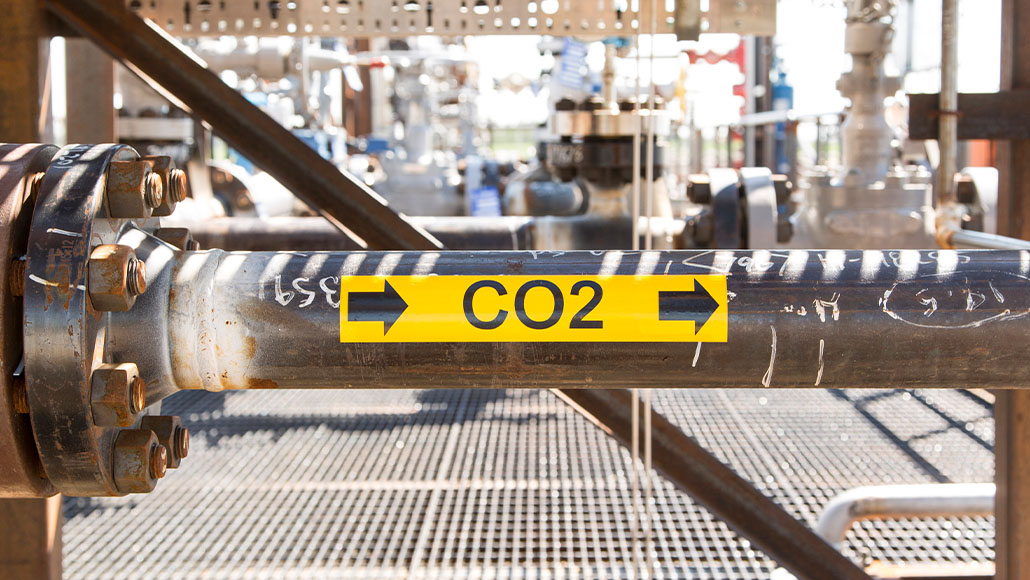Introduction and Governance
Introduction
Shell recognises that greenhouse gas (GHG) emissions from the use of hydrocarbon-based energy contribute to climate change. The Paris Agreement aims to strengthen the global response to the threat of climate change by "holding the increase in the global average temperature to well below 2°C above pre-industrial levels and pursuing efforts to limit the temperature increase to 1.5°C above pre-industrial levels". Shell supports the more ambitious goal of the Paris Agreement, which is to limit the rise in global average temperature this century to 1.5°C above pre-industrial levels.
Shell's Powering Progress strategy is designed to generate shareholder value, while meeting our target of becoming a net-zero emissions energy business by 2050.
Since 2017, Shell has supported the recommendations of the Task Force on Climate-related Financial Disclosures (TCFD). The TCFD framework aims to improve the disclosure of climate-related risks and opportunities and provide stakeholders with the information they need to undertake robust and consistent analyses of the potential financial impacts of climate change. The TCFD recommends disclosure of qualitative and quantitative information aligned to its four core elements: governance, strategy, risk management, and metrics and targets.
We recognise the value that the recommendations bring and, in accordance with UK Listing Rule 9.8.6R, set out below our climate-related financial disclosures consistent with all of the TCFD Recommendations and Recommended Disclosures. By this we mean the four recommendations and the 11 recommended disclosures set out in Figure 4 of Section C of the report entitled "Recommendations of the Task Force on Climate-related Financial Disclosures" published in June 2017 by the TCFD. We also take into account relevant supplemental guidance including, for example, the TCFD's additional guidance "Implementing the Recommendations of the Task Force on Climate-related Financial Disclosures" (also known as the 2021 TCFD Annex) published in October 2021 by the TCFD. We continue to align and enhance our climate-related disclosures.
TCFD Pillars |
TCFD Recommendations |
Reference |
|---|---|---|
Governance |
Describe the board's oversight of climate-related risks and opportunities |
|
Describe management's role in assessing and managing climate-related risks and opportunities |
Management's role in assessing and managing climate-related risks and opportunities |
|
Strategy |
Describe the climate-related risks and opportunities the organisation has identified over the short, medium and long term |
Climate-related risks and opportunities identified by Shell over the short, medium and long term |
Describe the impact of climate-related risks and opportunities on the organisation's business, strategy, and financial planning |
||
Describe the resilience of the organisation's strategy, taking into consideration different climate-related scenarios, including a 2°C or lower scenario |
Resilience of Shell's strategy to different climate-related scenarios |
|
Risk Management |
Describe the organisation's processes for identifying and assessing climate-related risks |
Shell's processes for identifying and assessing climate-related risks |
Describe the organisation's processes for managing climate-related risks |
||
Describe how processes for identifying, assessing, and managing climate-related risks are integrated into the organisation's overall risk management |
Integration of the climate-related risk management process into Shell's overall risk management |
|
Metrics and Targets |
Disclose the metrics used by the organisation to assess climate-related risks and opportunities in line with its strategy and risk-management process |
|
Disclose Scope 1, Scope 2, and, if appropriate, Scope 3 greenhouse gas (GHG) emissions, and the related risks |
||
Describe the targets used by the organisation to manage climate-related risks and opportunities and performance against targets |
[B] Subject to completion of the sale of Shell Petroleum Development Company of Nigeria Limited (SPDC).
[C] Customer emissions from the use of our oil products (Scope 3, Category 11) were 517 million tonnes carbon dioxide equivalent (CO2e) in 2023 and 569 million tonnes CO2e in 2021.
Governance of climate-related risks and opportunities
Board oversight of climate-related risks and opportunities
Our governance framework is designed to effectively deliver on the energy transition ambitions and targets of our Powering Progress strategy, which seeks to deliver more value with less emissions.
See our "Powering Progress strategy".
The Board reviews our energy transition strategy periodically and oversees its implementation and delivery. In 2023, the Board considered climate-related matters throughout the year, including the assessment of climate-related risks and the effectiveness of corresponding risk management activities. The Board also challenged and endorsed business plans, including consideration of major capital expenditures, acquisitions and divestments. In 2023, the Board convened nine times and continued to oversee the Powering Progress strategy and net-zero initiatives, including at the Board Strategy Days in June 2023.
See "Governance framework" and "Board activities".
The Board of Directors has the primary oversight of the delivery of Shell's energy transition strategy and is supported by the Sustainability Committee (SUSCO) [A], the Remuneration Committee (REMCO) and the Audit and Risk Committee (ARC). The importance of our energy transition strategy means that these committees are informed about climate-related matters on a frequent basis throughout the year. See "Climate change governance organogram" below.
[A] The SUSCO was previously the Safety, Environment and Sustainability Committee.
The SUSCO assists the Board in fulfilling its responsibilities by reviewing Shell's progress with respect to climate and sustainability elements of Shell's Powering Progress strategy.
During 2023, the SUSCO refocused its agenda on the areas of greatest strategic importance to Shell, in line with its updated terms of reference. This allowed the SUSCO to more effectively oversee Shell's progress with respect to sustainability.
The SUSCO reviewed the progress made against the non-financial elements of Shell's Powering Progress strategy, including progress against the ambitions and targets under the goals of achieving net-zero emissions, respecting nature and powering lives.
The SUSCO met four times in 2023. After each meeting, the SUSCO Chair provided updates to the Board.
See the SUSCO's activities in 2023.
The REMCO develops the remuneration policy for Executive Directors and Executive Committee members and sets performance conditions designed to challenge and support the Executive Committee (EC) to reduce net carbon emissions, while generating shareholder value. The REMCO met four times during 2023, with climate-related matters discussed at each meeting.
See "Directors' Remuneration Report" and the "Annual Report on Remuneration".
Climate performance and remuneration
Energy transition targets were part of the 2023 annual bonus scorecard (15% weighting), applicable to the majority of Shell's employees, as well as the 2023 Long-term Incentive Plan (LTIP) awards for senior executives (25% weighting) and the 2023 Performance Share Plan (PSP) awards for other employees (12.5% weighting), both vesting in 2026.
See "Directors' Remuneration Report" for further information.
See the "Governance framework" for the Board's oversight.
The ARC provides oversight of the effectiveness of the risk management framework and the integrity of our financial reporting to ensure that our financial statements reflect the risks and opportunities associated with our energy transition strategy and climate change. In 2023, the ARC met six times with climate-related matters regularly addressed.
See the "Audit and Risk Committee Report" for the ARC's activities in 2023.
Management's role in assessing and managing climate-related risks and opportunities
Climate change governance organogram
On January 30, 2023, Shell announced it would reduce the size of its EC with the changes taking effect from July 1, 2023. The new structure is designed to focus on performance, discipline and simplification across the organisation as we deliver our Powering Progress strategy.
The Chief Executive Officer (CEO) has the delegated authority from the Board to manage Shell's actions in relation to the Company's strategy. The CEO is assisted on climate-related matters by members of the EC to review and implement Shell's energy transition strategy and ensure that such matters are appropriately monitored:
- The Integrated Gas and Upstream Director is responsible for identifying and delivering low-carbon and emission-reduction investment opportunities in our oil and gas business, as well as managing and reducing carbon emissions from the business and using renewable energy to power our oil and gas extraction activities.
- The Downstream and Renewables and Energy Solutions Director is responsible for identifying and delivering climate-related opportunities, as well as managing and mitigating the climate risks of our Downstream and Renewables and Energy Solutions business.
- The Projects & Technology (P&T) Director is responsible for setting emissions, climate and reporting standards that are applicable to all our businesses. The P&T Director is also responsible for developing new technologies that will help our businesses to deliver on net-zero emissions reduction targets through both energy efficiency measures and solutions for decarbonisation.
- The Chief Financial Officer (CFO) is responsible for monitoring the effective application of the Shell Performance Framework, which provides the basis for managing our material risks, including climate-related risks and opportunities, and the assurance over our financial information, carbon emissions and climate-related disclosures. In addition, the CFO is responsible for Corporate Strategy, Sustainability and Carbon, including supporting the CEO in developing Shell's energy transition strategy and our Carbon Management Framework (CMF).
Additional supporting governance
There are two key supporting management committees, with representatives from across Shell, which play a critical role in driving our energy transition strategy:
- The Capital Investment Committee (CIC) facilitates portfolio management and capital allocation decisions and reviews each investment opportunity that is, due to its size or risk profile, subject to approval by the CEO or the Board. These reviews ensure that risk-reward trade-offs, together with other defined criteria including climate risks and opportunities, are embedded in investment decision-making. This committee is made up of senior executives, including the CEO, CFO and individual business directors.
- The Carbon Reporting Committee (CRC) includes senior management representatives focusing on climate-related matters from across the businesses, P&T climate-related disciplines and functions including Finance, Legal and Strategy. The CRC is responsible at the Group level for the Carbon Control Framework, the calculation methodologies and reporting of GHG emissions metrics, and the review and approval of external GHG-related disclosures. It is tasked with ensuring that GHG emissions measures, both absolute emissions and carbon intensities, and associated metrics comply with all regulatory and legal requirements.
In addition to these committees, our network of country chairs supports the overall governance, development and deployment of climate-related initiatives. They facilitate the setting of each country's plans and their engagement with external stakeholders in support of our strategy.
Processes by which management is informed about climate-related issues
Several processes are employed across the organisation to ensure that management teams can effectively monitor and manage climate-related matters. Our response to the evolving risk outlook requires transparency and clarity around our plans and actions to achieve our climate targets. The management teams are supported by a combination of carbon-management-related standards and frameworks, forums at various levels of the organisation, and capability development programmes. These include our carbon management framework (CMF), carbon pricing, and the Greenhouse Gas (GHG) and Energy Management process, policies and controls, which form part of our Health, Safety, Security, Environment and Social Performance (HSSE & SP) Control Framework.
Carbon management framework
Shell's CMF provides the structure and processes to drive delivery of Group carbon targets. The CMF seeks to manage and reduce emissions in a manner that is similar to how we use our financial framework. Carbon budgets are used as input to and guidance for the annual business plan process. They act as an effective mechanism to maintain absolute emissions below a capped level and help drive a change in product mix. The carbon budgets are allocated to the businesses and enable trade-offs between emitting carbon and generating shareholder value to occur within those budgets. The CMF informs portfolio decisions and supports delivery of our decarbonisation targets.
For the 2023 operating plan cycle, our net carbon intensity (NCI) targets were translated into net absolute emissions budgets for each business (see definition). These budgets were used by each business to optimise their operating plans. Performance against the targets embedded in the operating plan and the relative mix of products driving the Group's NCI are monitored and reviewed by the EC on a quarterly basis, facilitating corrective action if required.
Examples of how our decarbonisation targets are taken into account in fundamental decisions across the organisation are:
- Carbon metrics (profitability per unit of carbon emitted) is a key parameter considered in decision-making and when comparing different growth opportunities against each other within the various businesses.
- We translate our carbon targets into carbon budgets for each business as input and guidance to the annual business plan process. Businesses need to deliver a plan that maximises value within their carbon budgets.

Greenhouse gas and energy management
Each Shell entity and Shell-operated venture is responsible for the development of its GHG emissions and energy management plans. Plans are in place for all significant assets.
Our Greenhouse Gas and Energy Management process sets out Shell's requirements for GHG reduction opportunities and portfolio choices to meet our carbon budgets and achieve our decarbonisation targets. These requirements allocate accountabilities for GHG and energy management within businesses, assets and projects, including responsibility for analysing our emissions, benchmarking performance, identifying improvement opportunities, and forecasting future performance. These requirements are applied to capital project delivery and through the asset-level annual business planning process, ensuring it is reflected in both opportunity realisation and strategic asset management planning.
A key aspect of the GHG and Energy Management process is the development of an energy efficiency and greenhouse gas reduction opportunity curve, economically assessed against the current and future costs of carbon. This information provides the basis for forecasts of absolute GHG emissions and associated intensities at the asset and project level. These forecasts are then aggregated to inform decisions on potential decarbonisation opportunities across our businesses.
A Global Process Council for GHG and Energy Management, led by the Global Process Owner for GHG and including business and functional experts, meets regularly to evaluate opportunities for the ongoing improvement of processes, tools, communications, and capabilities needed within the businesses to achieve our decarbonisation aspirations.
The requirements of our GHG & Energy Management Process are integrated into our annual business planning cycle.
Definition – Scope 1, 2 and 3 emissions
We follow the GHG Protocol's Corporate Accounting and Reporting Standard, which defines three scopes of GHG emissions:
- Scope 1: direct GHG emissions from sources under Shell's operational control.
- Scope 2: indirect GHG emissions from generation of purchased energy consumed by Shell assets under operational control.
- Scope 3: other indirect GHG emissions, including emissions associated with the use of energy products sold by Shell.

Carbon pricing
We consider the potential costs associated with operational GHG emissions when we assess the resilience of projects. For each region, we have developed short-, medium- and long-term estimates of future costs of carbon. These are reviewed and updated annually. See Note 4 to the "Consolidated Financial Statements" for further details on our regional cost of carbon estimates.
Up to 2030, costs for carbon emissions estimates are largely policy driven through emission trading schemes or taxation which is levied by governments and which varies significantly on a country-by-country basis. Beyond 2030, where policy predictions are more challenging, the costs for carbon emissions are estimated based on the expected costs of abatement technologies required for 2050. The estimated cost is trending towards $125 or $170 per tonne (RT23), depending on the country, in 2050. Shell’s mid-price outlook of $125 - $170 per tonne used for the operating plan sits within the middle tranche of the abatement costs range of $100 - $200 which incorporates a broad range of technologies.
See "The resilience of Shell's strategy" for more information on how carbon costs impact our resilience to climate-related risks, including sensitivity analysis.
See the "Shell Climate and Energy Transition Lobbying Report 2023" which will be published in April 2024 for more information on Shell's advocacy across a range of issues including carbon pricing.









